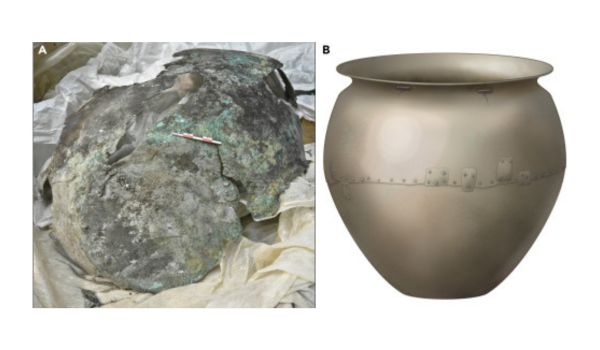Ancient Metal Cauldrons Culinary Secrets: In a groundbreaking discovery that offers a glimpse into the culinary world of the Bronze Age, archaeologists have cracked the code of ancient metal cauldrons, revealing tantalizing details about the diet and cooking practices of our ancestors.
As per Phys.org reports, a recent study published in the prestigious journal iScience on August 24 sheds light on what our ancestors were cooking and eating in the Caucasus region 5,000 years ago.
Also Read: The field of archaeology: Read to increase your knowledge
For centuries, archaeologists have relied on written records and context clues to infer how ancient tools were used and what they signified. However, understanding the dietary habits of ancient civilizations has proven to be a challenging puzzle. Until now.
Lead by Shevan Wilkin of the University of Zurich, a team of researchers embarked on a mission to unlock the culinary secrets of the Maykop culture, which thrived between 3700 and 2900 BCE. Their key to the past? Large metal and metal-alloy cauldrons, often associated with communal gatherings and rituals.
These enigmatic artifacts, although abundant, had puzzled historians due to their ambiguous functions. But Wilkin and her team sought to demystify their role by delving into the proteins and residues trapped within these ancient vessels. Their findings have sent ripples of excitement throughout the archaeological community.
"It's really exciting to get an idea of what people were making in these cauldrons so long ago," exclaimed Shevan Wilkin. "This is the first evidence we have of preserved proteins of a feast—it's a big cauldron. They were obviously making large meals, not just for individual families."
The breakthrough came through proteomic analysis, a cutting-edge technique that scrutinizes residues for traces of proteins. In this case, the residues within the cauldrons contained remnants of muscle, blood, and milk proteins from both domesticated and possibly wild ruminants.
The revelation suggests that these large cauldrons were used for cooking stews rich in primary and secondary animal products, painting a vivid picture of communal feasts in the Bronze Age.
One of the remarkable aspects of this discovery is the preservation of these proteins within the ancient vessels. Copper-alloy cauldrons, it turns out, possess antimicrobial properties that have remarkably safeguarded organic materials over millennia, providing an invaluable peek into the past.
The research not only sheds light on the culinary practices of the Maykop culture but also underscores the complexity of producing these cauldrons, given their well-used and repaired condition.
This revelation challenges previous assumptions about the purpose of these artifacts and highlights their significance in the culinary traditions of the time.
In an era where the past meets the present, this study marks a significant milestone in our understanding of early steppe societies and the role these ancient metal cauldrons played in shaping their culinary practices.
As archaeologists continue to peel back the layers of history, one thing is certain: the mysteries of our past are far from being fully unraveled, and each discovery brings us closer to connecting with the ancient world.
Complete research report 👉 Curated cauldrons: Preserved proteins from early copper-alloy vessels illuminate feasting practices in the Caucasian steppe
Author Team: Shevan Wilkin, Peter Hommel, Alicia Ventresca Miller, Nicole Boivin, Antonella Pedergnana, Natalia Shishlina, Viktor Trifonov






0 Comments